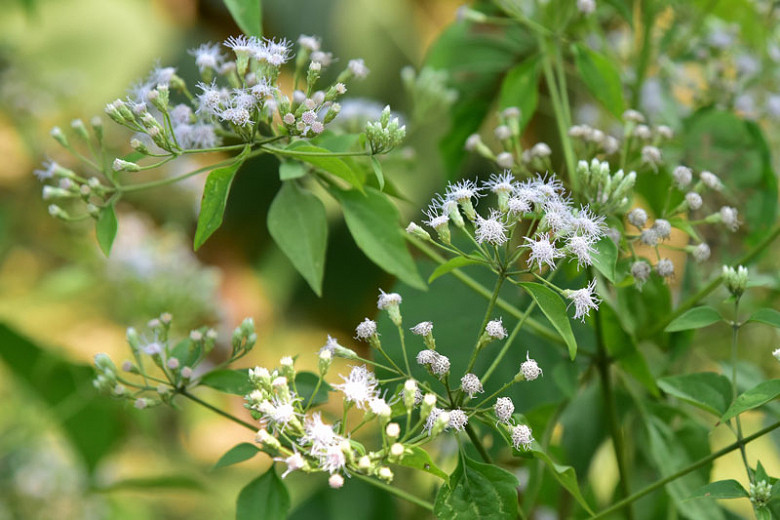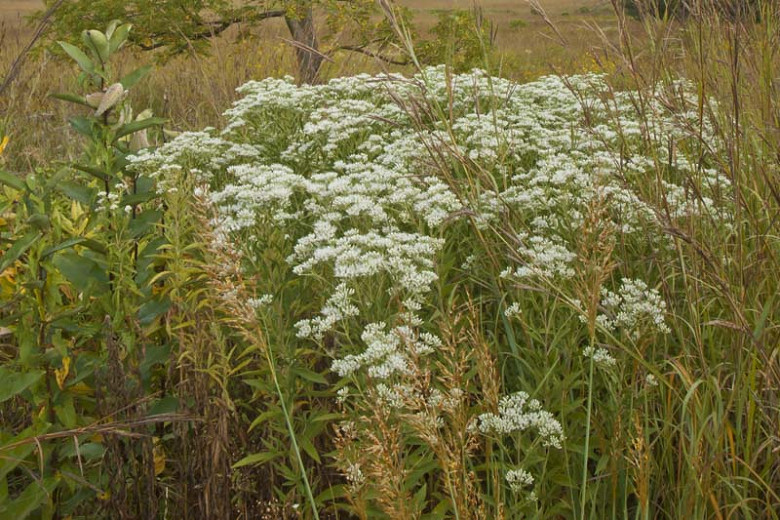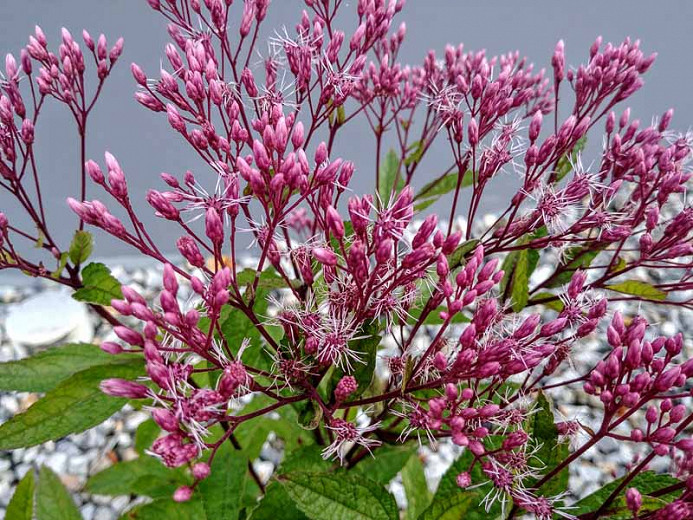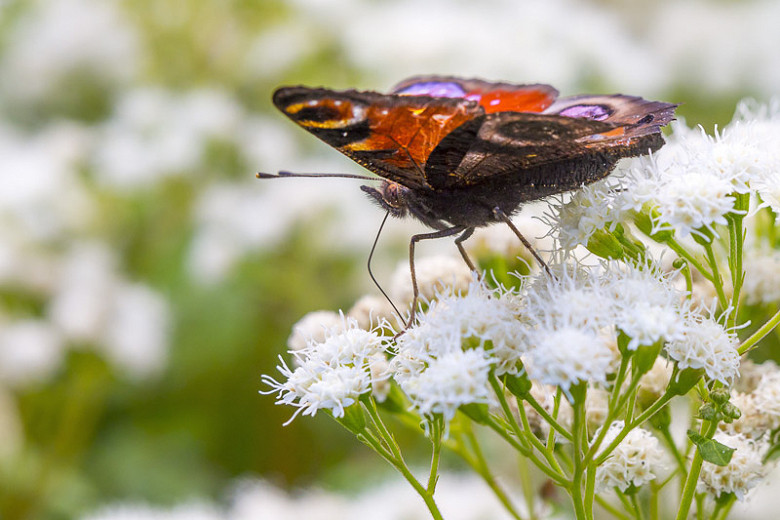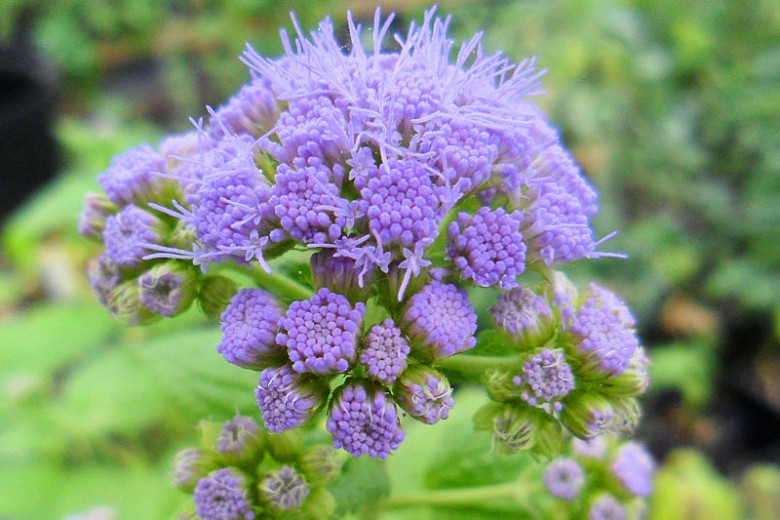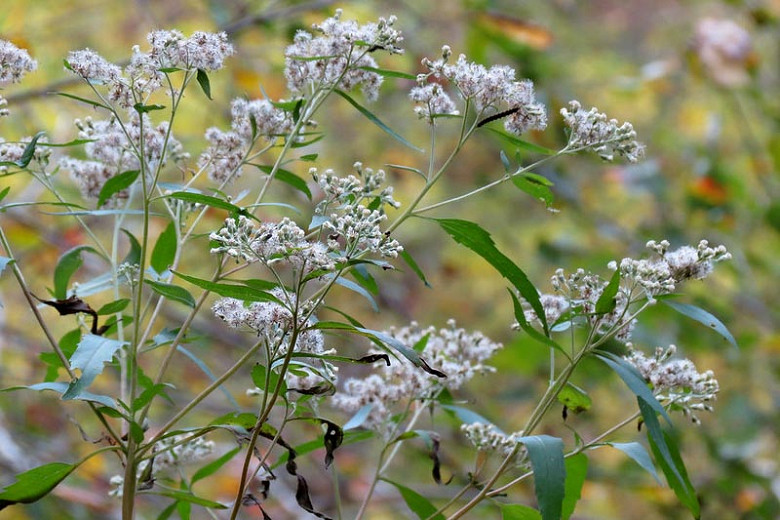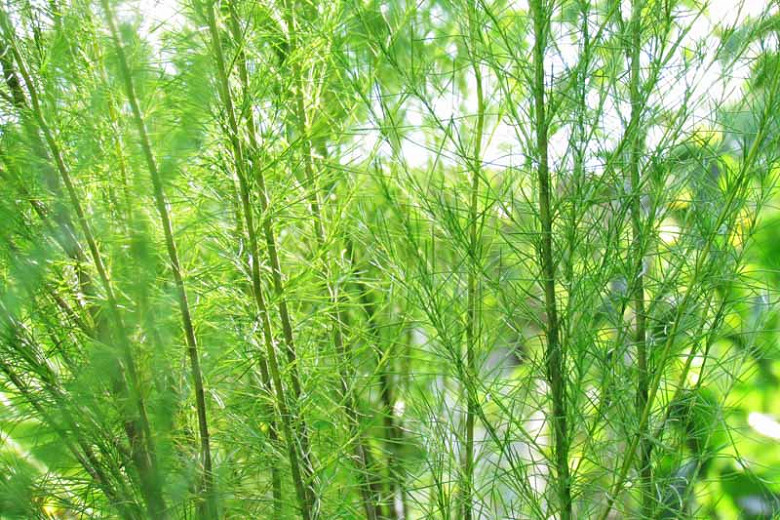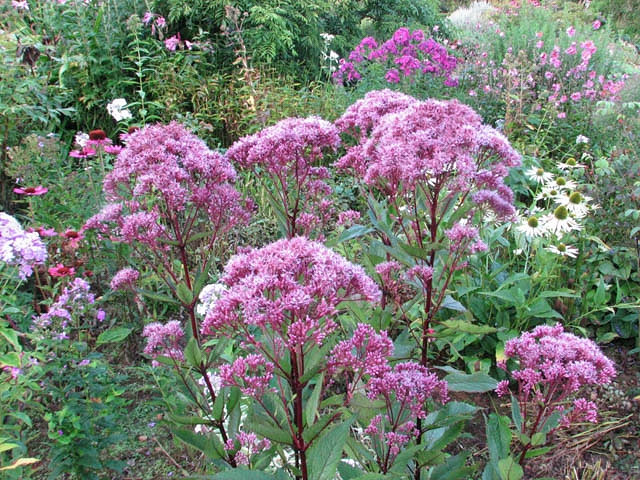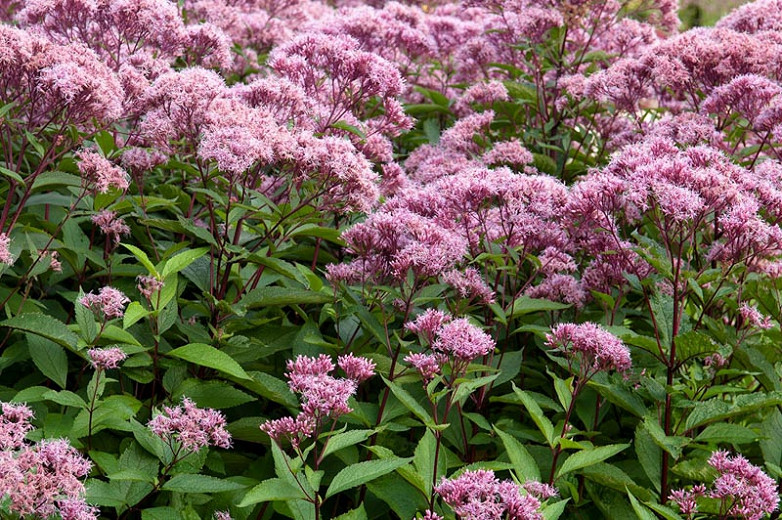Eupatorium perfoliatum (Common Boneset)
Eupatorium perfoliatum (Common Boneset) is a robust, clump-forming perennial with erect stems boasting large flat-topped clusters, up to 8 in. wide (20 cm), densely packed with small, off-white flowers in early summer to mid-fall. Blooming for about 1-2 months, the fragrant blossoms are attractive to butterflies and pollinators in search of nectar. Pairs of long, narrow, pointed leaves joined at the base unite to surround the hairy stems. Native primarily to wet soils in low woods, thickets, stream banks, meadows, and prairies in Eastern and Southern North America, Eupatorium perfoliatum provides a wonderful garden presence and late-season flowers at a time when choices may be limited. Use it in the informal setting of a cottage garden or allow it to naturalize in prairies or meadows. Historically, the dried leaves were used to make a tonic, boneset tea, thought effective in treating colds, coughs, and constipation.
- Grows up to 4-6 ft. tall (120-180 cm) and 3-4 ft. wide (90-120 cm).
- Performs best in full sun to part shade in average, moist to wet soils. Tolerates clay soils. Soils must not be allowed to dry out. May flop in rich, fertile soils.
- Very useful and adaptable in the garden, this is an excellent choice for mixed borders, cottage gardens, prairies and meadows, native plant gardens, bog gardens, rain gardens, and naturalized areas.
- No serious insect or disease problems. Deer resistant.
- Cut plants to the ground in early spring to promote bushier growth.
- Propagate by seed in the fall or division in spring or fall.
- All parts of the plant are quite toxic and bitter.
- Native to Eastern and Southern North America.
Requirements
| Hardiness | 3 – 8 |
|---|---|
| Plant Type | Perennials |
| Plant Family | Eupatorium – Joe-Pye Weeds |
| Exposure | Full Sun, Partial Sun |
| Season of Interest | Summer (Early,Mid,Late)Fall |
| Height | 4' – 6' (120cm – 180cm) |
| Spread | 3' – 4' (90cm – 120cm) |
| Spacing | 48″ (120cm) |
| Water Needs | Average, High |
| Maintenance | Low |
| Soil Type | Chalk, Clay, Loam, Sand |
| Soil pH | Acid, Alkaline, Neutral |
| Soil Drainage | Moist but Well-Drained, Moisture Retentive |
| Characteristics | Dried Arrangements, Cut Flowers, Fragrant, Showy |
| Native Plants | United States, Midwest, Illinois, Indiana, Iowa, Kansas, Michigan, Minnesota, Missouri, Nebraska, North Dakota, Ohio, South Dakota, Wisconsin, Northeast, Connecticut, Delaware, Maine, Massachusetts, Maryland, New Hampshire, New Jersey, New York, Pennsylvania, Rhode Island, Vermont, Southeast, Alabama, Arkansas, Florida, Georgia, Kentucky, Louisiana, Mississippi, North Carolina, South Carolina, Tennessee, Virginia, West Virginia, Southwest, Oklahoma, Texas |
| Tolerance | Clay Soil, Deer, Wet Soil |
| Attracts | Birds, Butterflies |
| Garden Uses | Beds and Borders, Bog Gardens, Ponds and Streams, Rain Gardens |
| Garden Styles | Informal and Cottage, Prairie and Meadow |
